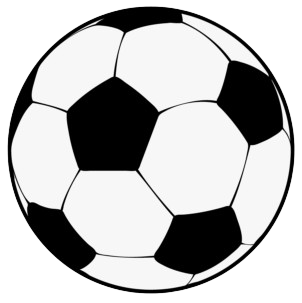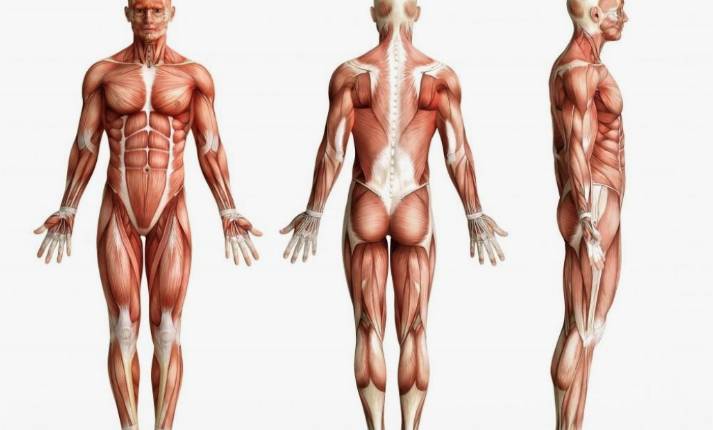The best exercises for the 7 most neglected muscles
The best exercises for the 7 most neglected muscles. The small or deep muscles in particular perform important tasks or become noticeable as we age. You should pay particular attention to these 7.
Ouch! You actually just wanted to get the box from the storage and when you stand up with the thing, your lower back feels like someone is attacking you with a knife. You can no longer move and immediately think of a herniated disc. But that doesn’t have to be the case! Often just a neglected, pear-shaped muscle is to blame. It is one of the 7 muscles that are most often inadequately trained. Therefore our advice: take everything with you (also) during your workout. You can find out how to do this here:
Why are individual muscles neglected?
It’s clear: not every muscle is suitable for love at first sight. In other words, they cannot be seen when trained and work in the background. Some strength athletes like to focus on presentable results, work a lot on equipment stations or always rely on the same processes. Over the course of a training life, it happens that individual muscles are less strong than others due to time-saving reasons, laziness or pure ignorance. On top of that, it may be enough to not stretch them regularly enough. This way you also lose power and can be painfully reminded that they are there.
Which muscles are often under-trained or not trained at all?
A total of 7 games are on the hit list of neglected muscles. These include:
1. The foot muscles
Even though you’re always into it, very few men pay enough attention to their foot muscles. Not only can this lead to sore feet, but it can also cause problems with your shins, knees or hips. Even back pain is sometimes related to tight or weak foot muscles.
2. The lateral thigh
Only women have to get this part in shape to compensate for riding breeches. Nonsense! In a well-functioning muscular system, everyone involved is important. The group of lateral thigh muscles is particularly crucial for the mobility of your thigh . And you need them more often than you think, for example when climbing stairs or playing football.
3. The pear-shaped muscle
The inconspicuous fruit can cause unbelievable pain that even makes you think of a herniated disc . The mini muscle below the gluteal muscles is simply extremely tense and presses on the sciatic nerve.
This can happen if you sit too much or do one-sided stress and neglect compensatory movements. Doctors speak of piriformis syndrome, according to the Latin name.
4. The large psoas muscle
Muscularly speaking, he is solely responsible for his big job – connecting the spine to the legs. It’s all the worse that it’s far too rarely on the training plan. The large lumbar muscle is one of the inner hip muscles and shortens due to constant sitting around.
5. The transverse abdominal muscle
The classic case: In order to see a six-pack , you don’t have to shape the transverse abdominal muscles. But if you don’t want to spend your whole life standing in front of the mirror admiring your washboard, you should definitely tackle this low-lying area. Especially since it stabilizes the torso and thus relieves the work of the spine – especially when standing. Because that’s exactly where it can be found: near the spine.
6. The pectoralis minor muscle
A typical case of standing in the shadow of your big brother: the existence of the pectoralis minor. It lies directly under the pectoralis major muscle. If you spend a lot of time on your 4 letters, it can easily cause tension in the pectoralis minor muscle.
7. The serratus anterior
The serratus anterior muscle, colloquially known as the serratus or saw muscle, is located on the side of the chest and is reminiscent of saw teeth. Unlike most of the other muscles mentioned here, this muscle is very easy to see when trained. According to Arnold Schwarzenegger, the only people who are real bodybuilders are those whose serrated muscle can be seen at all. Even if you don’t want to go on stage, you need this muscle to be strong and flexible. After all, you want to move your shoulder blade and not stand there like a gorilla with slumped shoulders. Or?
Why is it important to train neglected muscles?
Generally speaking, several muscles are always involved in a movement. Ideally, all colleagues are equally strong and practiced in interacting with one another. Even a weak point in the muscle chain can reduce performance or lead to pain. In particular, individual sleep zones trigger specific problems.
Atrophied foot muscles lead to pain, which comes from plantar fasciitis, for example, an inflammation of the foot tendon plate. They also promote misalignments that affect the entire body axis. X or bow legs can be a result. So it’s worth putting time into training your foot muscles every now and then.
The outer, side thigh area also deserves attention. If they don’t work properly due to tense or slack reasons, it will be difficult for you to turn your thigh outwards, lift it to the side or move it back and forth while standing.
However, you won’t immediately notice a neglected pear-shaped muscle . However, over time it can lead to knee, back or neck problems. In addition, you no longer breathe as deeply as you could, which reduces your performance in endurance sports .
The large psoas muscle also influences your breathing because it is connected to the diaphragm via fascia. The stronger and more flexible this muscle is, the better it can do its job as a support pillar for the organs in the lower abdomen. On top of that, it makes you stand well (upright) and helps you lift your legs forward.
More stability in the torso – the transverse abdominal muscles do their part to keep you stable at the top. This way, not all of the work involved in standing and walking upright remains on the spine. A workout for the transverse abdominal muscles is also a workout for a powerful back!
However, if you don’t train your small pectoral muscle adequately and protect it from tension, in the worst case scenario you can expect numbness in your arms, which can extend into your fingers. But even a tingling sensation is unpleasant and can be avoided with proper training. Just like the shoulder girdle sliding too far up, which the small pectoral muscle knows how to prevent at its full strength.
Your serratus muscle helps you move your shoulder blade properly and use your arms in all possible directions. Of course, this works better the stronger the muscle is. If there is tension, pain can spread in the ribs, on the shoulder blade or on the inside of the arms (keyword: golfer’s elbow).
What exercises are best for balancing neglected muscles?
Ball walking with dumbbells
For strong foot muscles
- Hold a pair of dumbbells in a hammer grip with your arms straight next to your body.
- Lift your heels off the floor and place your left foot forward.
- Take a few steps forward and alternately lift your heels.
Leg abduction with short tubes in the side lying position
For strong outer thighs
- Lie on your left side. Stretch your left arm and rest your head on it. Support yourself with your right hand in front of your chest.
- Place your feet about hip-width apart in each opening of the eight-shaped tube and hold the tube slightly under tension.
- Spread your right leg up as far as possible and hold the tension for a short time. Switch sides in the next sentence.
Buttocks stretch while lying down with your leg bent crosswise
Keeps the pear-shaped muscle flexible
- Lie down and stretch your arms out to the sides. Raise your left leg vertically and bend your knee at a right angle.
- Slowly lower your left leg over your right until your left foot is on the floor.
- Immediately continue with the right leg and then repeat it alternately like a strength exercise.
Pelvic raises with weight on your stomach
Strengthens the large lumbar muscle
- Lie on your back. Position a weight plate on your stomach and hold it with your hands.
- Push your pelvis up so that your body forms a sloping straight line.
- Hold briefly and return to the starting position.
Hanging leg raises with side leg swings
Challenges the transverse abdominal muscles
- Grab a sturdy branch or something similar. in the upper handle, under which an object such as a bicycle can fit.
- Bend your arms at a right angle and hold your legs diagonally to the right of the obstacle.
- Move your stretched legs in a wide arc over the obstacle to the left. Stop briefly and swing back the same way. Continue reciprocally.
Barbell bench press
Animates the small and large pectoral muscles, which optimizes their teamwork
- Lie on your back on a weight bench and place your feet flat on the floor. Hold a barbell with a shoulder-width overhand grip. Stretch your arms straight up.
- Slowly lower the barbell down until it almost touches your chest. Hold there and then push the bar back to the starting position.
Pull-overs with dumbbells on the weight bench
Expose the serratus muscle
- Lie on the long side of a training bench with only your upper back. Place your feet shoulder-width apart and push your hips up until your pelvis and upper body form a line. Hold a dumbbell on one side of the weight with both hands in front of your chest (check the dumbbell lock beforehand!) and then lower it behind your head with your arms stretched so that your arms are also in line with your torso.
- With your arms stretched, lift the weight up over your head until your arms are vertical.
How do I sensibly integrate these exercises into my training?
It’s best to simply add 1 to 2 exercises to your existing workout. You should do each exercise at least once throughout the week. You can also stretch the pear-shaped muscle every now and then. Bale walking can also be easily integrated into everyday life – with shopping or briefcases.
Conclusion: Muscles are the strongest in the group
If a muscle in a muscle group is too weak or shortened, the entire performance suffers. Therefore, make sure to also train the deep muscles that are not visible at first glance. With just 7 exercises a week you have already done a lot of balancing work.
KEEP TRAINING:
The 5 most popular physical fitness activities to stay in shape
The 15 most effective weight loss exercises

